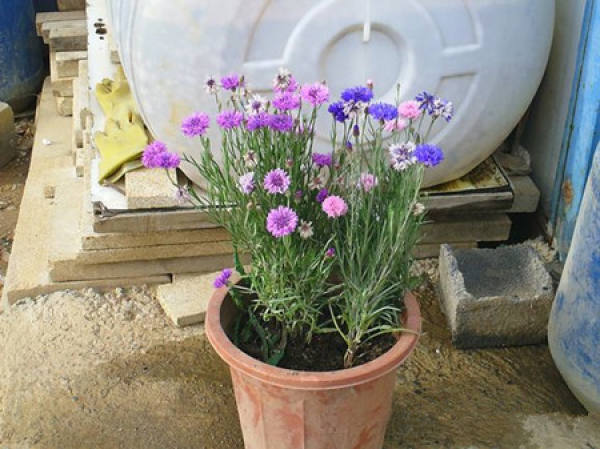Cornflower prefers loose and fertile sandy loam with good drainage. Therefore, the cornflower basin soil should be well drained and aerated as far as possible. If the soil is sticky, it can be improved by mixing sawdust or pearl stone. The best choice of cornflower basin soil is to mix the rotten leaves and ash of garden soil with mixed soil.

Cornflower is a long day plant, which needs a long time of light, so pay attention to place cornflower in the sunshine in winter.
In winter, the sunshine time is relatively short, sometimes it can't meet the demand of cornflower itself. You can use plant lights at night to supplement the lighting, and you can blossom earlier.
In summer, the sun is strong. You can't put cornflower in the direct sunlight. You should pay attention to shading and receive some scattered light.

It's enough to water the cornflower once a day, but when it's dry in summer, you need to water more water, usually once in the morning and once in the evening, so as to keep the pot soil moist. At the same time, you can also reduce the temperature of the pot plant, but you should avoid ponding.
Cornflower is fat. If the leaves grow too luxuriant, the amount of nitrogen fertilizer should be reduced properly, and more P and K fertilizer should be applied before flowering, so that it can produce large and beautiful flowers.

The damage of cornflower is less. As long as we pay attention to water control, apply fertilizer appropriately, increase light and keep ventilation. When it is serious, spray insecticides appropriately.
The stem of cornflower is very thin and weak, which is easy to skew. It is necessary to prevent it from growing too dense and causing lodging due to poor ventilation.
In the growth period, the liquid fertilizer is applied every 20 days, but it should be noted that more nitrogen fertilizer should not be applied, and more phosphorus and potassium fertilizer should be applied properly, so that the stem can be firm and bright flowers can be produced.
At the same time, water should be appropriate, too much will cause rotten roots, affect the normal growth of plants.